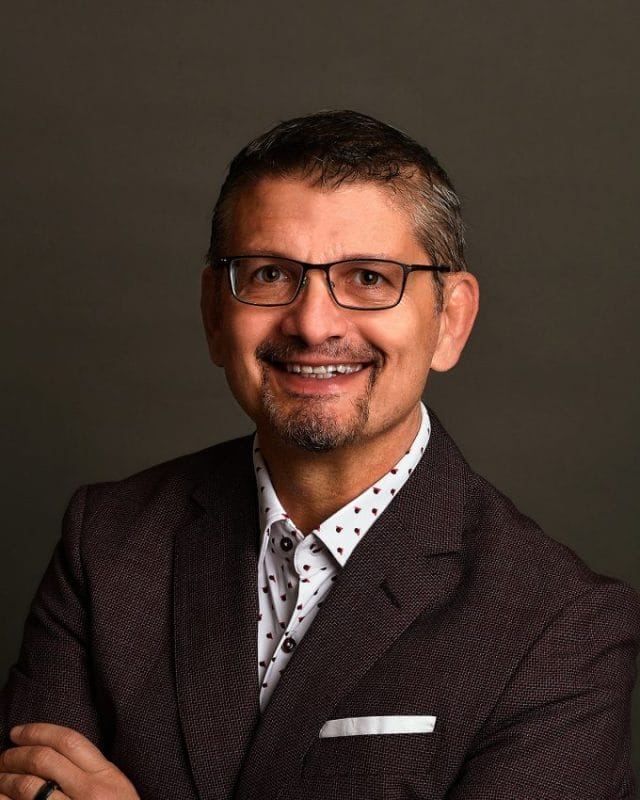Strokes are a leading cause of death and disability worldwide, with rates of stroke continuing to increase even in younger adults.1 There are two main types of strokes — ischemic and hemorrhagic. While ischemic strokes occur with more frequency, hemorrhagic strokes are far more deadly and debilitating — up to 50% of people who have hemorrhagic strokes will die within 30 days.2 For survivors and their caregivers, the impact of a stroke can be devastating.
October 29th is World Stroke Day (WSD) — an important day for the global stroke community to take action, educate, and focus on prevention. It is also a chance to deeply reflect on how we can continue to serve people who will suffer strokes in the future. For us leaders in the life sciences, WSD is a powerful reminder to ask ourselves how we can continue to innovate in order to decrease the lives lost and improve both clinical and economic outcomes.
Over the past decade, we have built a company and team at NICO Corporation dedicated to bringing forth new innovations and, more importantly, scientific evidence in the deadliest type of stroke — hemorrhagic stroke.
Hemorrhagic Stroke – The Most Deadly and Debilitating Type of Stroke with No Proven Surgical Answer
The burden of hemorrhagic stroke extends beyond its early mortality rate: globally, spontaneous hemorrhagic stroke impacts more than five million people each year and represents nearly 20% of all strokes in the developed world. At home in the U.S., hemorrhagic strokes cost the healthcare system more than $17 billion annually, with incidence expected to increase due to an aging population and increased use of anticoagulants.3
Unfortunately for most people, stroke is a life-changing event. For those people who do survive, up to 88% will be dependent on others for activities of daily living six months post-hemorrhage,4 and only 25% will return to functional independence.5
When a person has a stroke, a multidisciplinary healthcare team is quickly mobilized inclusive of emergency physicians, neurologists/neurosurgeons, neurocritical care, stroke team nurses, radiologists, primary care, and therapists (physical, occupational, and speech) to help in survival, recovery, and support a return to functioning. With the level of care needed to improve outcomes, it’s not surprising that the cost of care is increasing. From 2006-2014, the average cost of care increased from $63,831 to $112,833, per patient, even though the average length of stay in the intensive care unit has not changed.6
Despite hemorrhagic stroke being the deadliest and costliest type of stroke, there has been little improvement or innovation in the space. Over the past 20 years, there has been some improvement in medical management strategies, but no clinical trials have successfully identified an effective medical therapy, nor has any surgical innovation or clinical trial been shown to improve functional outcomes. Given the gaps in innovation and clinical evidence, we chose to focus on delivering innovative science and technologies with the lofty goal of becoming the first company to show via a clinical trial that we can improve functional and economic outcomes for stroke survivors.
The Path to Medical Device Innovation
Medical device innovation is a long and winding road that takes careful examination, determination, and trial-and-error, but based on the unmet needs, we strongly believed the place to start was surgery, not medical management. The undeniable facts are that hemorrhagic strokes carry higher rates of morbidity and mortality due to these reasons – time to intervention post-stroke, hematoma size, location, and expansion of the clot within 24 hours.7
When operating on hemorrhagic stroke patients, neurosurgeons identified four critical goals: early intervention, minimizing injury resulting from surgery, maximizing clot evacuation, and minimizing rebleeds. It was clear to us at NICO that the way you access the brain matters and the current suite of surgical tools was inadequate to evacuate the clot without causing more damage and more bleeding. In response, we became pioneers and developed minimally invasive parafascicular surgery, or MIPS, which was designed to meet the needs of the critical goals listed above while overcoming the limitations of prior hemorrhage evacuation procedures.
MIPS procedures are successfully performed due to the introduction and design of our innovative technologies, including BrainPath® and Myriad NOVUS.® BrainPath is the world’s first navigated access system for the last major organ in the body without a minimally invasive approach – the brain. BrainPath is the first and only technology to achieve minimally disruptive access using a trans-sulcal and parafascicular approach. Myriad NOVUS® was designed to gain maximal blood evacuation by safely automating the evacuation of the clot and reducing the number of times that surgical instruments need to be introduced and removed from the brain. Since 2011, these technologies have been used tens of thousands of times and received multiple FDA clearances for both clot evacuation and brain tumor removal. NICO’s unique technological solutions work together to deliver minimally disruptive access to the brain following hemorrhagic stroke and automated hemorrhage evacuation, helping neurosurgeons achieve an ideal surgery that aligns with their priorities.
Delivering Scientific Evidence – A Landmark Surgical Trial
With the introduction of our technology, we committed ourselves to the ongoing delivery of scientific evidence in pursuit of our goals to improve outcomes. At this point, we had successfully delivered new tools and gained multiple FDA clearances, but that was just the start. The next challenge: how do you design and deliver the world’s first positive clinical trial in hemorrhagic stroke?
The result was the ENRICH (Early MiNimally-invasive Removal of IntraCerebral Hemorrhage) randomized clinical trial, which enrolled 300 patients and took nearly seven years to complete.
ENRICH was designed to compare MIPS using NICO’s technology to the current standard of care (SOC), which is medical management (MM) based on the American Heart Association/American Stroke Association guidelines. ENRICH evaluated three primary endpoints related to effectiveness, safety, and economic outcomes of a standardized early MIPS approach and required all surgeries to occur within 24 hours of hemorrhage across 37 sites.
We premiered topline data at a leading neurosurgery medical congress this past spring, making the ENRICH trial the first positive clinical study for hemorrhagic stroke. It showed early MIPS intervention using NICO’s BrainPath® and Myriad® is safe and superior to SOC for hemorrhagic stroke. Specifically, at six months, functional outcomes in ENRICH were assessed using the utility-weighted modified Rankin Scale (UWmRS) with differences greater than zero corresponding to improved outcomes. The mean UWmRS score was 0.458 in the MIPS group and 0.374 in those receiving MM, the difference showing a 98.1% posterior probability of superiority. These results met the primary endpoint demonstrating the ENRICH MIPS group achieved a statistically significant and clinically meaningful improvement in UWmRS versus MM. The ENRICH study also demonstrated a benefit in mortality at 30 and 180 days among other data points.8
Upon seeing the results live at the medical congress, Adam Arthur, M.D., MPH remarked, “Today is a bellwether day, ENRICH is the most impactful science that has ever been presented at a neurosurgery meeting.” Dr. Arthur is a leading voice in neurosurgery serving as the director of cerebrovascular and endovascular neurosurgery for the Semmes Murphey Clinic and as Professor and J.T. Robertson Chair at the University of Tennessee.
We will publish the full results of ENRICH in multiple peer-reviewed journal articles, including the primary results and economic and surgical outcomes to share these groundbreaking results with the entire stroke community.
The Future is Finally Here for Improving Hemorrhagic Stroke Outcomes
The results of the ENRICH trial will change how we treat hemorrhagic stroke. In addition to demonstrating the safety and efficacy of the ENRICH MIPS approach, the trial offers the tools and a data-driven, standardized approach for improving functional outcomes, mortality, and economic outcomes in hemorrhagic stroke.
Now that we have the proper evidence, we turn our attention to collaborating with our PIs, thought leaders, institutions, and community stroke centers to help standardize these ENRICH MIPS processes and protocols in the day-to-day setting. Because time is of the essence for treating hemorrhagic stroke, we are also tapping into industry partners to leverage AI in an effort to appropriately and expeditiously identify patients, accurately measure the size of the bleed, and quickly alert the care team of candidates who could benefit from the ENRICH MIPS approach.
Beyond safety and efficacy, ENRICH also demonstrated its processes and protocols created economic and operational efficiencies such as reducing the length of hospital stays9 and the elimination of secondary scans. We are excited to report more data on these outcomes soon in a peer-reviewed journal.
Since inception, our goal has been to save lives and improve outcomes for the people who suffer these deadly strokes, and we continue to drive that mission daily. By collaborating across disciplines, hospitals, and industry, we hope to identify the right candidates for the ENRICH MIPS approach so that with each World Stroke Day, we can share more positive stories of improvement, progress, and innovation.
Editor’s Note: Jim Pearson is a co-founder, President, and CEO of NICO Corporation, whose proven and patented technologies integrate imaging and intervention for a safe, minimally disruptive approach to brain surgery. He has over 25 years of experience in healthcare and medical devices, including previously serving as the President, CEO and board member for Suros Surgical Systems, Inc. Suros was a leading medical device company known for its minimally invasive surgical technologies in biopsy and tissue excision.
References:
1 https://www.massgeneralbrigham.org/en/about/newsroom/articles/causes-of-strokes-in-young-adults#:~:text=But%20new%20resear ch%20from%20the,for%20the%20past%2030%20years.
2 Elliott, Justine, and Martin Smith. “The Acute Management of Intracerebral Hemorrhage.” Anesthesia & Analgesia, vol. 110, no. 5, May 2010, pp. 1419–1427,
journals.lww.com/anesthesia-analgesia/pages/articleviewer.aspx?year=2010&issue=05000&article=00028&type=Fulltext,
https://doi.org/10.1213/ane.0b013e3181d568c8.
3 Li, Xianqi, et al. “Incidence and Long-Term Survival of Spontaneous Intracerebral Hemorrhage over Time: A Systematic Review and Meta-Analysis.” Frontiers in Neurology, vol. 13, 10 Mar. 2022, www.ncbi.nlm.nih.gov/pmc/articles/PMC8960718/, https://doi.org/10.3389/fneur.2022.819737.
4 Scaggiante, Jacopo, et al. “Minimally Invasive Surgery for Intracerebral Hemorrhage.” Stroke, vol. 49, no. 11, Nov. 2018, pp. 2612–2620, https://doi.org/10.1161/strokeaha.118.020688.
5 Ratcliff, Jonathan J., et al. “Early Minimally Invasive Removal of Intracerebral Hemorrhage (ENRICH): Study Protocol for a Multi-Centered Two-Arm Randomized Adaptive Trial.” Frontiers in Neurology, vol. 14, 16 Mar. 2023, https://doi.org/10.3389/fneur.2023.1126958.
6 Coppens J. Minimally Invasive Parafascicular Surgery (MIPS) in ICH: Economic Argument for Early Surgery. SSG White Paper. Subcortical Surgery Group; 2018. https://www.subcorticalsurgery.com/spotlight-on-healthcare-economics/
7 Elliott, Justine, and Martin Smith. “The Acute Management of Intracerebral Hemorrhage.” Anesthesia & Analgesia, vol. 110, no. 5, May 2010, pp. 1419–1427, journals.lww.com/anesthesia-analgesia/pages/articleviewer.aspx?year=2010&issue=05000&article=00028&type=Fulltext, https://doi.org/10.1213/ane.0b013e3181d568c8.
8 NICO Corporation Announces World’s First Positive Surgical Trial for the Deadliest Type of Stroke. https://niconeuro.com/news/enrich-trial-positive-results-mips-for-ich/. Last accessed October 2023
9 NICO Corporation Data on File.




